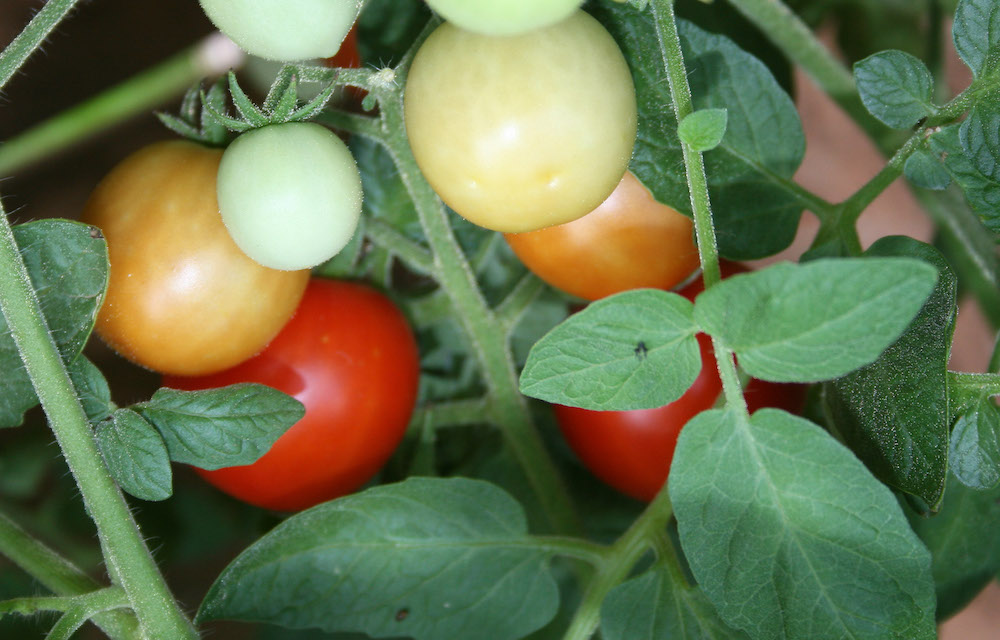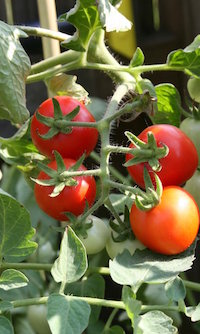Bob Westerfield spends his days growing vegetables and watching for problems. As University of Georgia Extension’s consumer vegetable horticulturist, he answers questions from backyard gardeners and Extension agents across the state. In the summer months, most of the questions are about tomatoes.
“I’d say 90 out of 100 vegetable calls I get in the summer are about tomatoes,” said Westerfield. “I’m not a huge fan of eating fresh tomatoes, but those who do say the fresh-grown taste is incredible. I want to love to eat them, but I just don’t like them. But I will eat them cooked, and I love ketchup.”
Plant second crop, or first, now
With Georgia’s long summer growing season, Westerfield says it’s not too late to “grab some transplants and put them in the ground” and enjoy your own homegrown tomato harvest.
“Some folks planted tomatoes early and are pulling tomatoes now. On my farm, we stagger our plantings, so that we have some tomatoes that are almost red and some just in the blooming stage,” he said.
When planting tomatoes, Westerfield says you have to keep your personal preference in mind when selecting a variety. What do you plan to do with the tomatoes? Do you want something easy tomatoes to eat fresh or ones to use for canning?
Indeterminate tomatoes ripen over the whole season, which is a better option for eating them fresh. If you plan to can tomatoes, select a determinate variety because the bulk of the crop will ripen at the same time.
If you want to plant tomatoes just for eating, Westerfield recommends one of the cherry types for salads and either Beefsteak or Beef Master for tomato sandwiches.
“Last year we grew some chocolate Russian tomatoes, and my research assistant popped them in like gumballs. They did have a sweet taste,” he said.
For canning, Westerfield recommends Rutgers or Celebrity. “Amelia, a newer variety, is also a good one,” he said.
Plant deep and wide
No matter which variety you select, bury the plants deep. Tomatoes have advantageous roots, so burying a tomato plant deep will lead to a tremendous root system, he said.
Don’t put the plants too close together. “You want a lot of air in between each plant for ventilation to prevent diseases,” he said.
Westerfield enjoys growing tomatoes for homemade Italian sauce. His wife does the cooking and canning. “She uses a recipe from an Italian lady from up North and follows the guidelines in the ‘So Easy to Preserve’ cookbook from UGA Extension,” he said. “It has everything in the world you need to know about preserving food.”
Using a 12-quart pot, she cooks the tomatoes in hot water, peels them, purees them, cooks them with olive oil and several other herbs, and then stores them in jars. “It’s an easy way to have your own sauce, and you know what’s in it because you put it there,” he said. “We usually put up enough tomato sauce to use in spaghetti, eggplant Parmesan and lasagna until the next growing season.”
He and his family also store stewed tomatoes in the freezer. “They are really simple to make. You just cook them, add basil or oregano, pour them in quart size bags and use them in the winter to make soups,” Westerfield said.
For more details on Georgia home grown tomatoes, see the UGA Extension publication written by Westerfield at http://extension.uga.edu/publications/detail.cfm?number=B1271. The sixth edition of “So Easy to Preserve” will be available the end of August and can be ordered at http://setp.uga.edu/.









